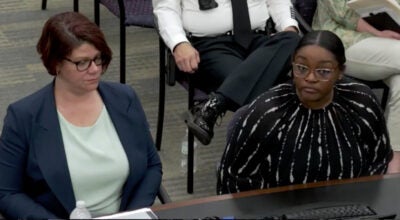Salisbury City Council considers proposed transit system updates
Published 12:00 am Sunday, May 12, 2019
By Liz Moomey
liz.moomey@salisburypost.com
SALISBURY — Last week, the Salisbury City Council received a presentation to think about possible changes to the city’s public transportation.
Kurt Neufang, senior transportation manager at Architecture Engineering Construction Operations and Management, presented council members with ideas of additional routes, microtransit, expanding its regional service and increasing the Salisbury Transit’s capital, as a part of the Salisbury Transit Long Range Public Transportation Master Plan.
The city surveyed bus riders and other citizens in December to get a better understanding of the Salisbury’s transit needs.
Neufang told the council that riders are pleased with the service, but that doesn’t mean the city shouldn’t consider making improvements to have an exceptional public transportation system.
“They like your service,” Neufang said. “The amazing thing is is that if the service was fixed how it could be, they would love your service. Right now your transit-dependent folks are thankful to have a ride for a dollar to get where they need to go, but there’s so much potential to do more.”
Neufang said if the system was improved it could allow for people who don’t currently ride the bus to become riders.
“If the system was fixed and pulsed correctly and designed right, there would be a lot more riders on the system,” Neufang said. “It’s not that there’s not riders, I just think from our perspective, what we’ve learned in the interview process with surveying that would be a priority to look at in the future.”
Mayor Pro Tem David Post said he thinks for some communities they will always prefer to get in their cars to drive somewhere instead of catching a bus through Salisbury Transit.
“It would serve more of the below income, economically-distressed neighborhoods where people don’t have alternatives other than their legs,” Post said.
Some of the proposed added routes would be connecting the VA Hospital with Catawba College and West End Plaza, connecting East Spencer with Novant Health Rowan Medical Center, Head Start and Walmart.
Another option was Route Safe Ride Salisbury which would serve on Friday and Saturday at 9 p.m. to 1 a.m. to bring Catawba College and Livingstone College to Innes Street, Walmart and Tinseltown.
He also proposed microtransit for on-demand service at 9 p.m. to 1 a.m. to connect college students with the Harris Teeter, Southgate Shopping Center and others.
He also asked the council to consider the possibility of a Rowan-Cabarrus Community College evening service route that would run 7:30 to 11:30 p.m. to assist riders taking night courses.
Neufang presented ridership through the three municipals Salisbury transit is offered from 2016. In Spencer, there were 6,203 annual riders or 1.9 transit trips per resident. In East Spencer, there were 13,419 annual riders with 9.2 transit trips per resident. In Salisbury, the transit trips per resident was 3.8.
He also showed the cost share of both the towns receiving the services: Spencer at $47,000 and East Spencer at $58,000.
Council members agreed they would like to continue serving Spencer and East Spencer, but the cost was something to consider going forward to potentially ask the two towns to chip in the fund the service.
Barbara Mallett, the East Spencer mayor and Transit Advisory board chair, said the transit system is an asset for East Spencer to connect residents to Salisbury to go to work or go to the grocery store for many years. Not only is Salisbury Transit a mode of transportation for those that otherwise wouldn’t have it, but a mode of communication — riders will meet the same people every time they ride the bus.
“That may be the only people they talk to all day,” Mallett said.
She acknowledge that East Spencer doesn’t fund the transit system, but is willing to have a conversation.
“Everything has to have some means of support,” Mallett said.
The Salisbury Transit is partly funded by federal dollars along with city funds. There is also an opportunity to apply for grants.
Transit Director Rodney Harrison said they want to improve to provide an exceptional customer service. As society changes, riders want quicker and faster services, like microtransit, at their fingertips.
He said it was up to council to decide what is the best direction the city should go for their transportation needs.
Harrison added some of the six buses are aging. Four buses from 2004 needed to be replaced, but it could be a smaller vehicle or a more efficient vehicle.
The council asked Neufang to bring back more information regarding riders, like when they get on and off the bus.
More News



